Click to Download the PDF
Download the Word Doc
President’s Message
Music in the Streets is going to take place in the Pioneer Village on June 25. The GHS is selling refreshments at the gatehouse and a couple of more volunteers are needed to share a shift. Volunteers are also needed to welcome visitors to the buildings on Canada Day, please let the GHS or Melissa know if you can help.
Harvest Day is back this year on Saturday, September 17, please mark this day on your calendar as the assistance of all our GHS members is needed to make this Historical Society event a success.
Thank you for your ongoing support of all of the GHS projects and events.
Enjoy your summer
Take Care! Stay safe!
Tom Glover, President
Roches Point Post Office
This month’s calendar picture is the Roche’s Point post office. Roches Point was named after the Irish settler James O’Dell Roch, who obtained land in the area sometime before 1812 and sold it after being forced to retreat during the War of 1812. It became a Government Reserve by 1822, and after the War of 1812 was considered as a possible alternative capital to replace York (now Toronto), as it was farther from possible American encroachment. Toronto had been captured and briefly occupied by American forces during that war. The Roches Point post office was built in 1870 and was later moved to the Georgina Pioneer Village.
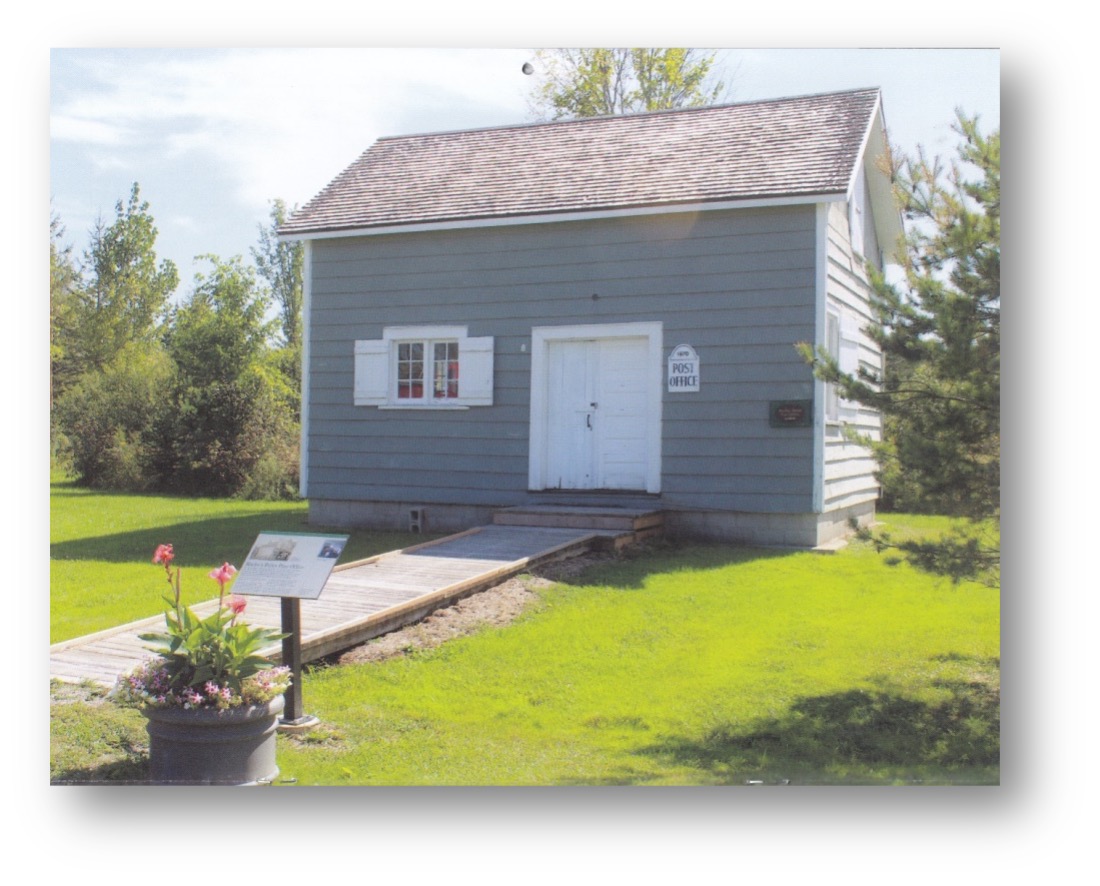
Our Early Postal Services – A Brief History By Bob Holden
Before the American Revolution, there were no postal services in the British Colonies as we know them until in 1753. Benjamin Franklin was appointed as one of two deputies postmaster general for the British colonies. In 1755, Franklin organized the first regular monthly mail packet service between Falmouth, England, and New York. He also opened the first official post office in Canada in Halifax, Nova Scotia, to link Halifax with the Atlantic colonies and the packet service to England. A post office for local and outgoing mail had been started by Benjamin Leigh in Halifax in April 1754.

By 1763 Franklin had established a post office in Québec City, with subsidiaries in Montréal and Trois-Rivières. Hugh Finlay, a Scottish immigrant, became postmaster. A monthly courier service by way of Lake Champlain connected Montréal with New York and the Atlantic packet service. In 1774, Franklin was dismissed because of his sympathy with the American revolutionary cause and by 1775, the mails were being seriously disrupted by the revolutionaries. Hugh Finlay became postmaster for the Northern Colonies and stopped inland service because of the threat to couriers’ lives. The Revolutionary War ended in 1783; and, on 7 July 1784, Hugh Finlay became the deputy postmaster general for Canada. The revolution brought a major immigration of Loyalists to Canada and a demand for improved postal services. Early in 1784, Finlay hired a courier, Pierre Durand, to pioneer a Canadian route to Halifax from Québec City through 1,000 km of forest; a trip that could take as much as three weeks. By 1851 there were postmasters general in Nova Scotia, New Brunswick and the Province of Canada, but the British government still administered the postal system. Provincial deputies were convinced that they could operate the system more efficiently and petitioned Queen Victoria for a transfer of authority. The queen’s approval was gazetted on February 22, 1851 and became effective April 5th 1851. From then until Confederation, the provinces co-operated in providing the mail service required, with W.H. Griffin, secretary in charge, reporting to the Honourable James Morris, postmaster general of the Province of Canada. The new decentralized, co-operative arrangement lived up to the expectation of its advocates. Rates were reduced and volumes doubled in the first year of provincial co-operation.
In the years immediately following the American Revolution, British North America experienced an influx of disbanded soldiers and others loyal and sympathetic to the British cause. Nova Scotia, New Brunswick, the eastern townships of what was shortly to become Lower Canada, the eastern counties of the future Upper Canada along the St. Lawrence River, and the Niagara area. All these areas had been quickly filling with new settlers. Feeling isolated, they soon petitioned for postal services in and to their new settlements. In 1789 the Québec Gazette reports that “a post will be dispatched every four weeks” to post offices opened in the various communities along the St. Lawrence River through to “Kingstown.” While regular service ended at Kingston, occasional mail trips were made to Niagara and Detroit to the west and Michilimackinac in the north.
In the late 1790s the British and Americans reached a convention for all postal services between the northern colonies and the United States. Mail from Great Britain destined for the colonies was to be routed through New York City to Burlington, Vermont, and then on to Montréal. Conversely, mail from colonies destined for Great Britain was to be shipped from New York City. Later British mail received at New York for the Canadas was sent in sealed bags by the New York Postmaster to Burlington, Vermont, where it was met by the Canadian courier who brought it to Montréal. This service took 14 days.
By 1800, frustrations with postal regulations and poor service levels to the isolated and rapidly expanding areas of Upper Canada were addressed and conditions began to improve. Service to Niagara increased from one delivery during the entire season to one delivery per month; additional couriers were also placed on the Montréal-Kingston route. In 1811 Postal service to Upper Canada was such that couriers between Montréal and Kingston, U.C., were dispatched once every two weeks throughout the year and couriers between Kingston and York were dispatched once every two weeks during the close of the navigation on Lake Ontario. A year later mail moved daily between Montreal and Quebec except on Sundays and service to Kingston improved to twice a week; between Kingston and York once a week; and from York to Ameliasburg once every two weeks. There were 19 post offices in Upper Canada in 1820. Mail services continued to improve and by 1831 it had increased to five times a week between Montreal and Niagara.
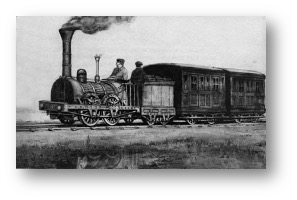
The wood-burning Dorchester hauling Canada’s first train
With the advent of Canada’s first railway in 1836 the potential of improved communications between places was immediately seen and this was also perceived by the mail services. One of the first advantages of the railway for postal service was that the mail could be dispatched more quickly. Within a week of the opening of the Champlain and St. Lawrence on July 21st, it was announced that the time to convey mail between New York and Montréal has been reduced by about five hours to 64 hours.
Stagecoaches started travelling up and down Yonge Street in 1825. George Playter & Sons formed a stagecoach business and started offering regular coach service from York up to Holland Landing. However, these vehicles were prone to becoming stuck in the mud.
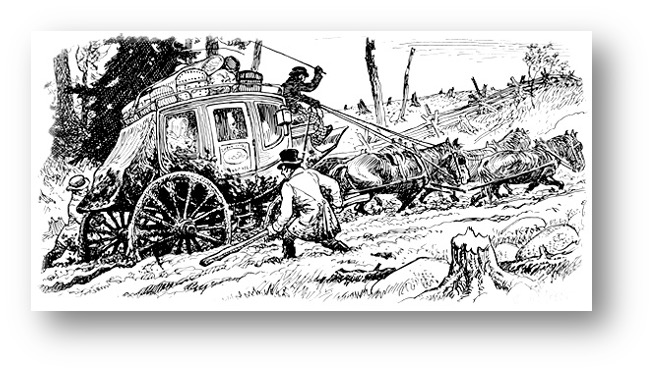
One observer who travelled up Yonge Street in 1829 noted that the roads “are generally excessively bad, and full of mudholes in which if a carriage fall, there is great trouble to get it out again. The mail coaches and wagons are often in this predicament, when the passengers instantly jump off, and having stripped rails off the fence, they lift it up by sheer force.”
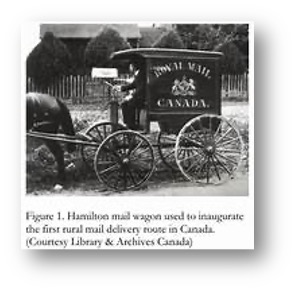
However, running a stagecoach was a lucrative business, and many companies were formed and disbanded during the 1830’s and 40’s. In 1829, William Garbutt won the contract to carry the mail from York up to Newmarket and would charge passengers going between the two points a fare of six shillings and three pence. William Weller bought the stagecoach line going up Yonge Street from George Playter in 1842, and subsequently sold it to Charles Thompson in 1840.
In the Toronto Directory and Street Guide for 1843-4, it advertises the stagecoach schedule up to Holland Landing thusly: “A Stage leaves the Stage Office, bottom of Church Street, every morning at 7 o’clock for Holland Landing, and returning leaves the Holland Landing every morning at 5 o’clock and arrives in Toronto in time for the Kingston and Hamilton boats.” Later, two stage coaches a day would leave for Holland Landing, one at 7AM and the second at 3 pm; it would take about six or seven hours to make the thirty-five-mile (or 56 kilometers) trip town to Toronto. Georgina had a stage from Sutton to Newmarket via Belhaven and Keswick. All carried the mails. As a result, many inns and taverns sprang up along most coach routes to accommodate hungry and thirsty travelers looking for a place to sleep after their ordeal by stagecoach. With the opening of the Ontario, Simcoe and Huron Railway in 1853, the coaches to Barrie and Holland Landing were discontinued since the train was much faster and a more reliable method of travel to these more northern locations. It also made mail services quicker and more reliable.
In 1841 official steamboat mail service between Montréal and Québec was inaugurated. Upper and Lower Canada were united as the Province of Canada and for administrative purposes, Upper and Lower Canada are renamed Canada West and Canada East. Exchange post offices to the United States were established in the Maritimes, Lower Canada and in Upper Canada at Prescott, Brockville, Kingston, Toronto, Queenston, Sandwich, and Niagara. A year later daily mail service began during the summer months between Montréal and Kingston.

By 1850 sail had largely given way to steam as a reliable way to move the mail over Canada’s major water routes. During the navigation season mail steamers regularly carried mail from Kingston to Montréal and from Montréal to Québec. In 1852 these services were put on an interconnecting schedule and extended to the head of Lake Ontario to speed up the mail from Canada West. By 1865 there were mail steamboats on the Upper Great Lakes connecting Parry Sound, Collingwood, Sault Sainte Marie and Fort William with the US Postal Service. A weekly steamer service also brought mail from Québec to the Gaspé Peninsula and the ports around the Gulf of St Lawrence.
In 1852 these services were put on an interconnecting schedule and extended to the head of Lake Ontario to speed up the mail from Canada West. By 1865 there were mail steamboats on the Upper Great Lakes connecting Parry Sound, Collingwood, Sault Sainte Marie and Fort William with the US Postal Service. A weekly steamer service also brought mail from Québec to the Gaspé Peninsula and the ports around the Gulf of St Lawrence.
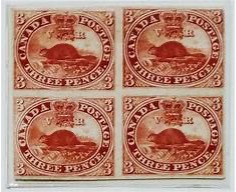
On April 5, 1851, the management of the Post Office was formally transferred to the Province of Canada, and James Morris appointed the first Postmaster General. The first Canadian stamp, the Three Penny Beaver, was designed by Sir Sandford Fleming. It is one of the world’s earliest examples of a pictorial stamp, as opposed to the customary portrait of the reigning monarch, a statesman, geometric design, or coat-of-arms. Postage stamps were first issued in the Province of Canada on April 23rd, in Nova Scotia on September 1st, and in New Brunswick on September 5th.
In the Province of Canada, the first stamps were prepared on unperforated sheets to be cut by local Postmasters. In 1857, the Post Office department took steps to obtain perforated sheets of postage stamps to facilitate separation into single stamps, and in 1858, the first perforated stamp, the half-penny rose, was issued. Sandford Fleming designed the first three postage stamps of the Province of Canada in 1851. The Six-Pence Consort, issued 17 May 1851, is the second in this first series.
The Grand Trunk Railway between Brockville and Toronto was finally completed and, in 1857, time for the delivery of mail between Québec and Windsor was reduced to 49 hours from 10½ days in 1853. Also on August first of the same year, a half-penny stamp was introduced as the medium for prepaid transient of newspapers not exceeding three ounces. A transient newspaper is a newspaper posted by individuals other than the publisher.

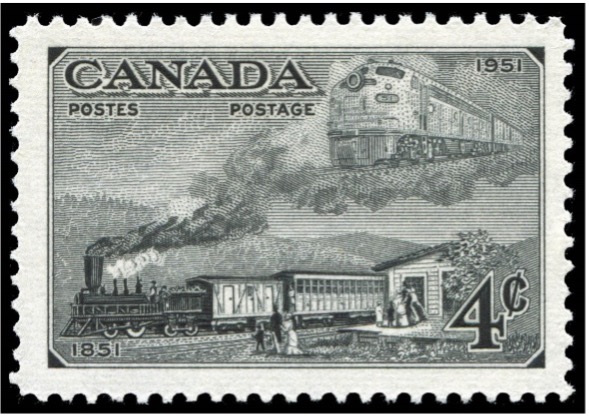
In that year regular conveyance of the mail by steamboats on Lake Huron and Lake Superior was also established. On Lake Huron, trips between Collingwood and Sault Ste. Marie were scheduled weekly. On Lake Superior between Sault Ste. Marie and Fort William, the trips were every fortnight.
On 1 July, New Brunswick, Nova Scotia and the Province of Canada joined together to form the Dominion of Canada. A national postal system now stretched from Halifax to Fort William on Lake Superior. As of Confederation there were 2333 post offices across the new nation. At this point, new railways linking larger centres of population along the St. Lawrence and along the lower great lakes provided quicker and much improved mail services. People no longer felt so distant and isolated as in the past.
https://www.historymuseum.ca/cmc/exhibitions/cpm/chrono/chs1760e.html
The following are more memories of Old Ravenshoe from our esteemed President.
MOVING THE BLACKSMITH SHOP by Tom Glover
A true story, but the names have been altered to protect the guilty. Saturday night was the time for the locals to gather at the old red brick store in Ravenshoe. A time to visit with friends and catch up on the latest neighbour happenings while seated around the old pot-bellied stove. Smiling Jack and Big Bill, a couple of local characters would always arrive feeling the effects of a day of refreshments, their way of relaxation after a hard weeks work. On their arrival Elmer, the storekeeper would be sure that the door to the families living quarters was shut. He did not want his children seeing or hearing what antics might occur. It was on one such Saturday night that the plans to move one of the old blacksmiths shops were formulated.
The hamlet had once supported three busy blacksmiths but by the late 1920’s only one remained in business. Sweezy, the remaining blacksmith had purchased one of the old shops intending to move the building across the town line and up Catering Road to expand his shop. Big Bill and Smiling Jack assured him that it would be no problem in hooking on to the old building with their steam tractors and hauling it to its new location. The following Saturday was set as the day for the big move.
Big Bill arrived first with his steam tractor. Surveying the situation, he realized he was low on water and headed to a little pond just north on the Catering Road to top up. His judgement being a little impaired due to the flask that accompanied him he got too close to the pond and the tractor became mired in the mud. By this time Smiling Jack had arrived with his tractor and with a little cursing and a few more sips of whisky they were able to extract Big Bill’s tractor from the mud.
They then returned to the task of moving the old building. They each hooked their tractors onto a front corner of the shop. The smithy had set on its sturdy log foundation on the same location for over 50 years. It was somewhat rooted in place. The chains were tightened but the building did not move and the tractors dug their wheels in the ground. Another pass of the flask while surveying the situation and then Big Bill and Smiling Jack began to move their tractors back and forth to jerk the shop loose. Back and forth a little faster each time.
Unfortunately their movements were not coordinated and as more attempts that were made the tractors began to angle off in different directions. Suddenly a large crack and the building tore apart and collapsed in a heap on the ground. Sweezy was not very happy with his movers. The smithy was eventually moved and rebuilt one piece at a time. Not only automobiles but steam tractors should not be operated while impaired.
THE STRAWBERRY SUPPER By Tom Glover
Church suppers have long been a popular event put on by the local congregation. The first church suppers at Ravenshoe were held in the church shed. Since the church had no basement the only space available was the shed where the horses where sheltered during church services. The shed would be cleaned, make shift tables set up and a “meat” supper held. Definitely this venue would not adhere to today’s health code.
In the 1920s a basement was dug, the church jacked up and slid on to its new foundation. The popular suppers could now be held regularly year round in the new basement. An event enthusiastically attended by the entire community. Even before the meat suppers a July gathering on the lawns of parishioners became an anticipated annual event. The first Ravenshoe Strawberry supper was held on the lawn of Mr. And Mrs. R. H. Weddell in Ravenshoe in the 1890s. Illuminated with torch lights and Chinese lanterns the evening was a real success. A musical and literary program presided over by Rev. Brown provided entertainment and proceeds of $55 were raised.
The event grew and by the time the 5th annual Strawberry supper / dinner party was on my grandparent’s lawn not only local church members provided entertainment but the Mount Albert Brass Band was imported to play for the evening. The evening continued to grow and in the following years guests were entertained by the Sutton String Band, the Queensville Orchestra and guest soloists from neighbouring communities. Attendees came from many neighbouring communities to enjoy the meal, the entertainment and socializing. The following comment from a gentleman from Drytown sums up the evening; “An enjoyable time and those Ravenshoe ladies are tolerable good cooks.”
No wonder the Strawberry supper became an annual event!
Georgina Pioneer Village’s One-Horse Open Sleigh – Part Deux,
By Paul Brady
The little horse drawn cutter sleigh that I told you about in last month’s newsletter has made its way back to the Pioneer Village. Cliff Williams and I delivered it to the Village on June 1st in it’s shiny new red and two-tone green livery, looking very smart indeed. We were lucky to avoid the down-pours of that day, experiencing only a few sprinkles of rain on our trip from Sutton to the Village.

With help from Bob Holden and the village carpenter Richard Williams, we got it off the trailer and under the overhang at the train station. One of the problems that we’ve been dealing with has been the fact that the doorway to the exhibit area in the Sutton rail station is 35” wide and the cutter is about 40”.
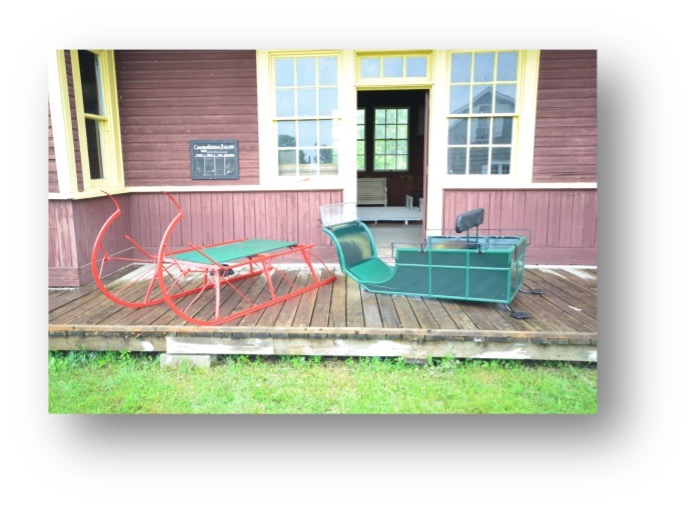
A few minutes with a screwdriver and a wrench had the cutter separated into two pieces, laid on their sides and squeezed through the door. Once inside everything was set right, reassembled and wiggled into place alongside the amazing single person, manually powered rail access machine that is also a part of the Georgina Pioneer Village collection.
Refurbishing the cutter has been a fun little project, consuming about 50 hours of my time and a couple of hundred dollars’ worth of paint, hardware and leather. I hope that the membership is pleased with the finished product, actually more of a sympathetic refurbishment than a full restoration. The object of this project was to use as much of the original cutter as was possible, retain its original charm, and make it into a valuable and attractive part of the collection.
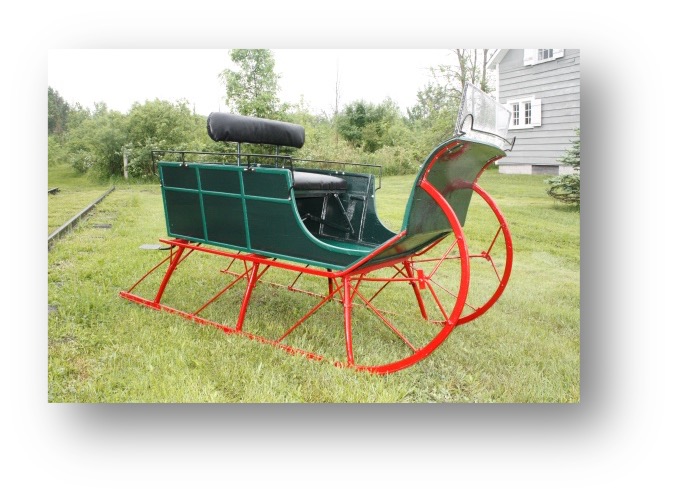

Left is the completed cutter sleigh as displayed in the Railway station in the Georgina Pioneer Village.
All photos by Paul Brady and Bob Holden
My next project is this interesting store display (see right), a cheese display box intended to sit on a store counter to entice the general store customer into spending a few hard earned 1890’s pennies on a nice slice of cheese. It turned up in the attic of the general store needing refurbishment, and should come along nicely.
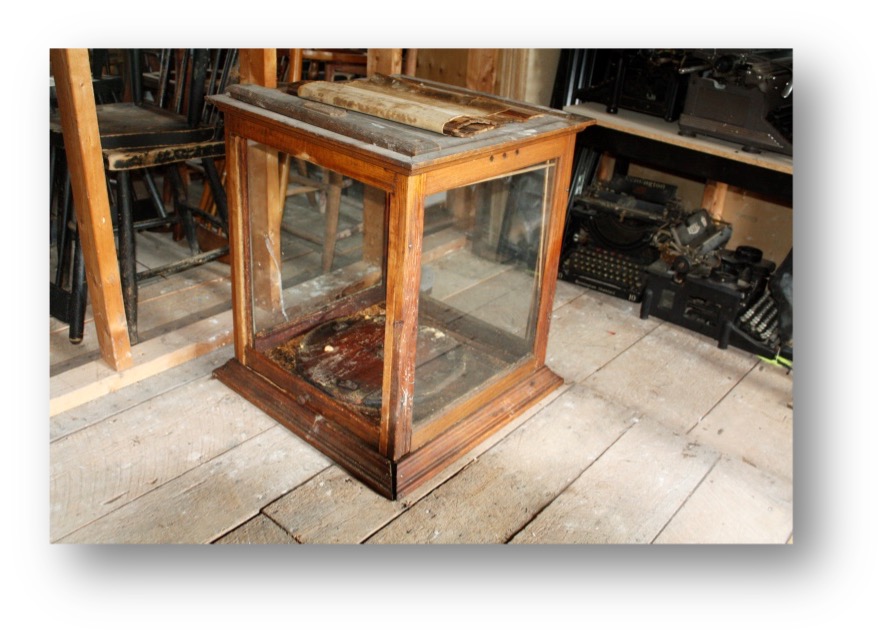
Our Pioneer Ancestors
SQUIRE MORTON, deceased-, was born in the United States and emigrated to Canada with his parents, Simeon and Elizabeth (Squires) Morton, in 1 80 1. He was then three years of age, and continued to reside on the homestead until 1817, when he married Sybelia, daughter of Darius Mann. He first settled in North Gwillimbury, subsequently removing to concession 4 of East Gwillimbury Township. His family consisted of ten children four sons and six daughters; by industry and perseverance he secured for them a comfortable home. He was a man of strong religious convictions, and in the capacity of minister for the Canadian Christian Church did a great deal of good in his section. He died in 1867, at the age of seventy years. Darius Morton, lot 8, concession 5, the second son of the above, was born on May 19, 1820, and lived with his parents until twenty-one years of age. In commencing life for himself, he settled on the farm in North Gwillimbury Township, which he still occupies. He married Deborah Phoebe, daughter of Captain N. McArthur, of Ameliasburg, Ontario, by whom he had three sons and four daughters. On the death of his first wife he married her sister, Elizabeth McArthur; he has two sons and one daughter by his present wife.*
*Excerpted from: History of Toronto and County of York, Volume II; C. Blackett Robinson, Publisher 1885, p. 503.a
Where in Georgina?
Come on Folks! This one’s a no-brainer…many of you must pass by it several times a week! Still unsolved as yet…here again is our current mystery place; what and where is the location of the above image? Hint…it’s still there…as a private residence!
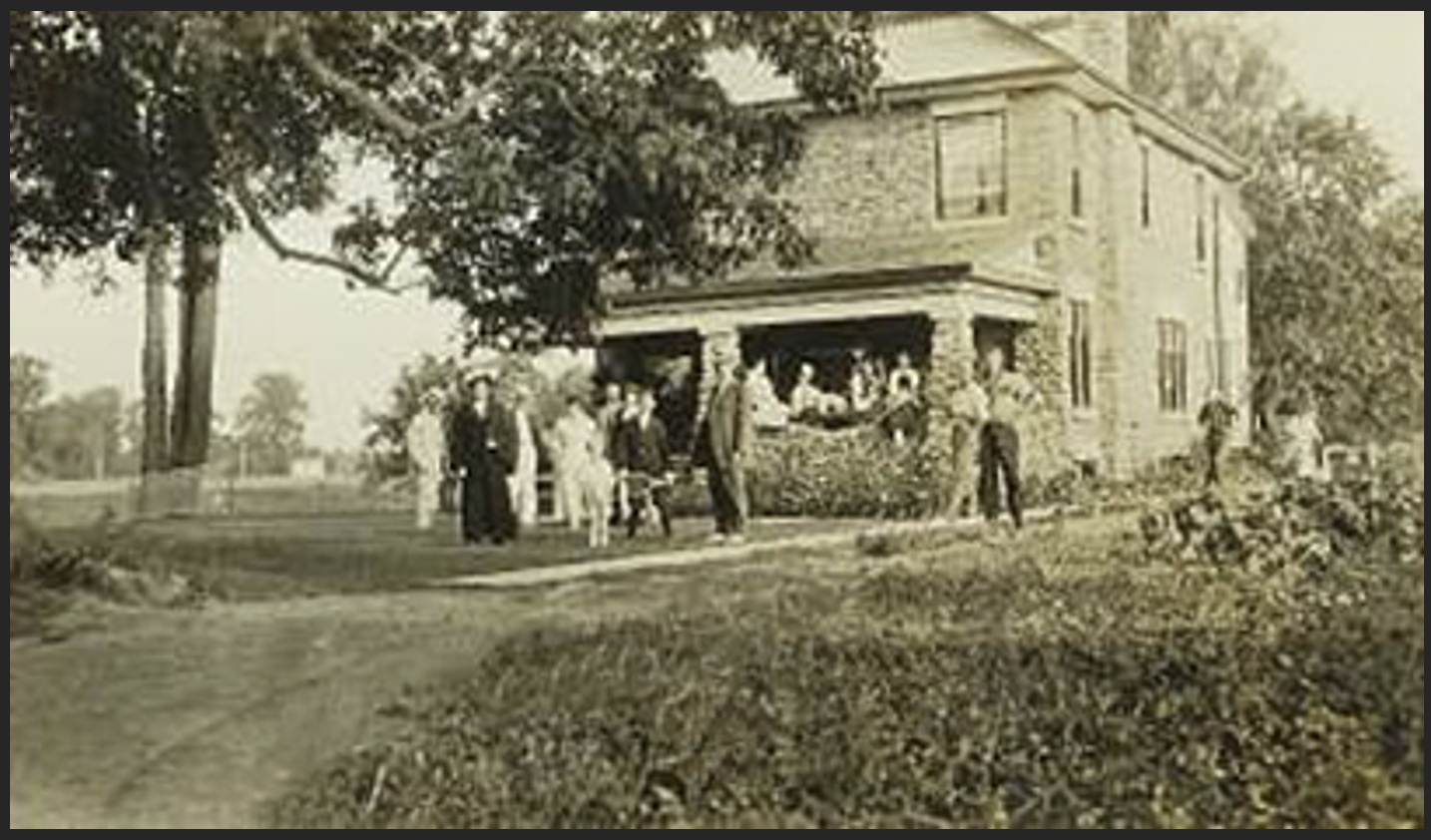
News
There will be no tour of the school house in the Village as yet. This will be delayed as approvals for use from the Town have not been given. The building is deemed a “new build” and as such must meet more stringent code requirements. As a result the opening for this building will be delayed until after Canada Day.
With everything else opening up, the GHS will need all hands on deck to help with events and in assisting the staff in the Village for its various events. If you can help or would like more information, please contact Melissa Matt, Curator of Georgina Pioneer Village, at 905-476-4301 ext. 2284 or curator@georgina.ca. For all other events or queries contact a GHS Board member for further information. Handouts will be available advising members of upcoming meetings, their topics, other events and upcoming volunteer opportunities in the Village. Contact Tom Glover for a copy. Members will also be advised of this information in future issues of the newsletter. We are manning a refreshment booth for “Music in the Streets” being held in the Georgina Pioneer Village for the first time and could use more volunteers for between 1 and 4 in the afternoon. Please call Tom Glover if you can help.

John Phillips is a member of the organizing committee of the 100th anniversary of the Briars Golf Club and is doing research on the Club’s history since 1922. He would appreciate any information or anecdotes about the club. He may be contacted at cupofbestcoffee@gmail.com.
Events
June 21st – General meeting with a tour of the renovated Caboose, and new Village signage.
June 25th – Music in the Streets. The GHS will be running a refreshment booth for this event.
July 1st – Canada Day at the Pioneer Village…volunteers needed. Parking will at the Lawn Bowling Green…volunteers meet at the Bandshell at 1:30
August 5th, 6th, and 7th – Sutton Fair 1st weekend in August volunteers need for our booth.
September 17th – Harvest Day at Georgina Pioneer Village…help needed here too!
